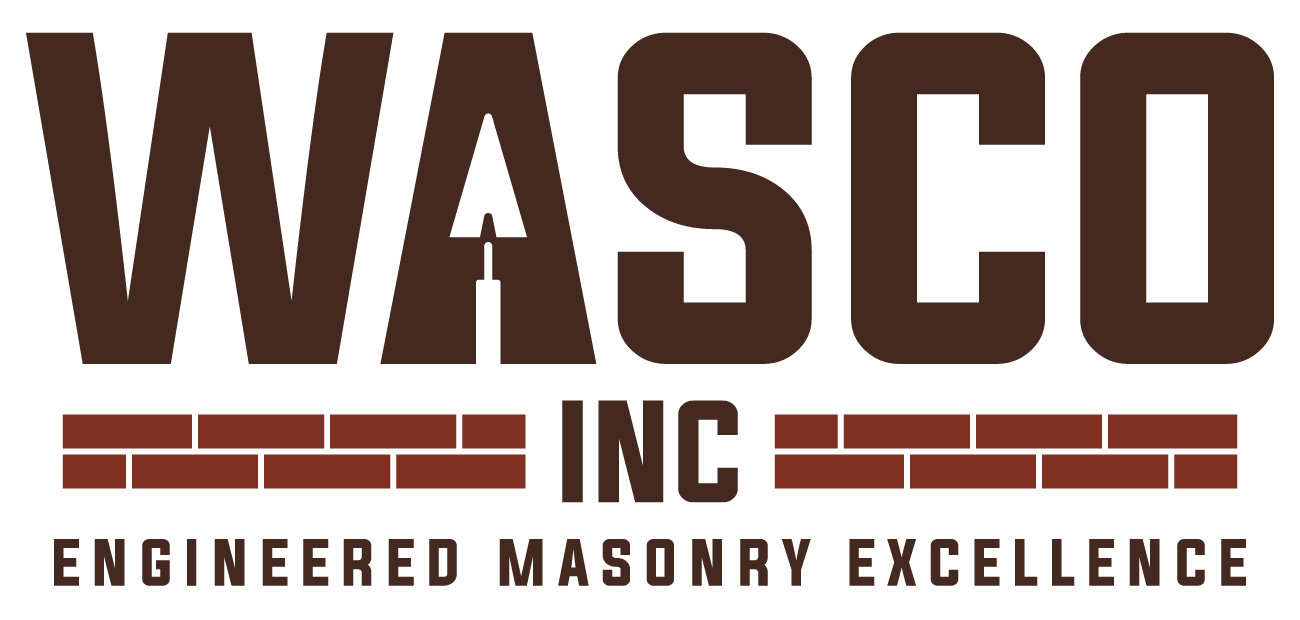Company History Series: WASCO Knoxville Part 1
WASCO and Southern Stucco merger cements a twin commitment to excellence and vision.

In 2013, when WASCO’s tradesmen began work on the corporate office building for Knoxville-based SouthEast Bank, they were taking part in a unique collaboration. The four-story structure’s striking and classic exterior was the result of a joint venture taken on by WASCO and respected local plastering contractor Southern Stucco. For the first time in the 30-plus years that both companies had been active in the Knoxville region, the two worked in tandem, fashioning a novel exterior marrying traditional brick and stone work with a custom-fabricated veneer exclusive to Southern Stucco. Known as Syncast, the lightweight, polymer-modified cement blend integrates seamlessly with conventionally used brick in a host of creative applications. In the case of the SouthEast Bank building, thin brick tiles were uniquely attached to prefabricated Syncast panels that complement the tiles in a triumph of aesthetic harmony and superior durability.
As WASCO CEO and president Andy Sneed explains, “It looks like this really fancy brick job that was all done with full-thickness brick through the wall, and big, full-thickness stones. Part of it is that, and part of it is not, and you can’t tell the difference.”
In 2015, Sneed met Southern Stucco co-founder Barry Jenkins, whose company had again been enlisted to work alongside WASCO Knoxville—this time, on the award-winning Alcoa (TN) High School. As men of vision whose faith-based philosophy undergirds every decision affecting their customers, projects, and workforce, Sneed and Jenkins discovered they had substantial common ground. This included a shared goal of offering contractors a lightweight, fully integrated envelope—one for which they would collectively assume single-source responsibility. The two firms worked out the details of a merger over the ensuing months, with Southern Stucco’s Willow Avenue building becoming the new Knoxville headquarters for the expanded WASCO in the summer of 2016.
Southern Stucco shares a bit of history with its partner, having begun doing business in Knoxville in the early 1980s, around the same time that the Nashville-anchored WASCO was establishing a presence in the city. But while WASCO was a fully functioning entity already known for its quality and dependability, Southern Stucco began life as a modest start-up that faced a considerably steeper climb. After arriving in Knoxville in 1978 with his wife and soon-to-be-born son, Jenkins divided his time between independent contracting, studying architecture on the side, and working for local companies including Gilbert Plastering and Anning-Johnson. Partnering with a tradesman he’d met on one of his short-term assignments, Jenkins formally started Southern Stucco in 1981. His three-man team began finding and tackling jobs that required them to double as scaffold carpenters, lathers and whatever other roles a project happened to entail.
Learning on the fly out of sheer necessity, Jenkins successfully grew Southern Stucco into an operation with a workforce of more than 50 and an annual gross reaching 3.5 million. Ultimately, Jenkins’ hands-on, trial-and-error education helped to form his big-picture view, a perspective that has become his most defining professional characteristic. His “blue-collar/white-collar” business approach, as he describes it, is “really understanding what the problems are, and really identifying what the logical solutions will look like.” This approach, in its earliest form, led Jenkins to begin putting “little creative twists” into his finishes. His initial attraction to the creative potential of plaster, which sparked his eventual interest in ornamental plasterwork and faux finishes, gradually evolved into the development of the GFRC-based Syncast custom fabrications that are now regularly specified on institutions, churches and municipal buildings, among other projects.
Over time the company developed a reputation for superior compatibility with existing or alternate materials, one example of note being its restoration of an addition put on Knoxville-born dignitary Victor Ashe’s birthplace. In order to restore a structurally deteriorating addition put on the original house, replicas of now-unavailable cast stone units were created and laid in with bricks. The finished work not only matches the original stone work, but the new, lighter units will in fact outperform the original materials.
Southern Stucco’s simulated brick finishes and other custom fabrications can be found throughout the greater Knoxville area, with installations on design-intensive Pigeon Forge tourist attractions as well as historic buildings such as downtown’s First Presbyterian Church. The fact that many observers have no idea they’re looking at veneer rather than 100% stone or brick, Jenkins says, is “the best compliment, the worst marketing.” Well aware that some in his industry view veneer as a less-desirable alternative to the use of quarried stone in its least-altered form, Jenkins explains that this particular discussion is made difficult by the use of such simplistic terms as “real” versus “fake.” Everything, from cut and uncut stone to full-size or thin veneer, baked clay brick—be it structural or modular—and laminae, is real, Jenkins notes.
“So it’s not a very good term and it gets confusing when you try to apply it technically. l would say the same thing about fake and faux—I try to only use them to distinguish from ‘real.'” With numerous methods and materials now available and equally viable, he sees the question of authenticity as being relative—a matter of practicality, not one that requires a defense. “We’re all making veneer,” he points out. “What is the best veneer for a particular application?”
Stay tuned for Part 2.
If you’re interested in more Wasco history, check out Company History Series: WASCO and Lovell’s Parts 1-3
